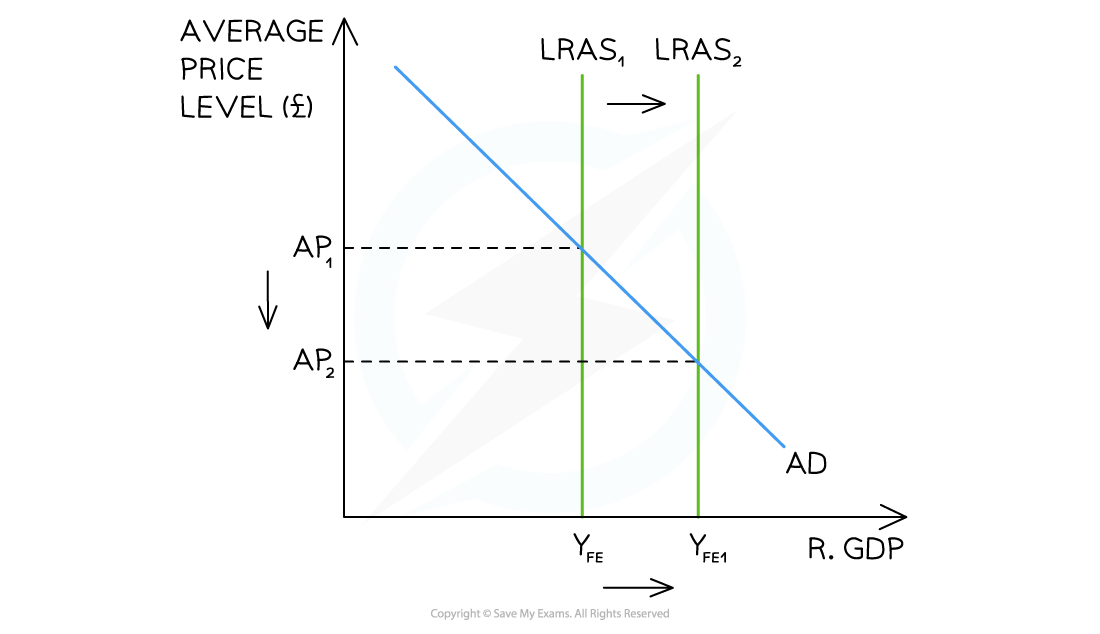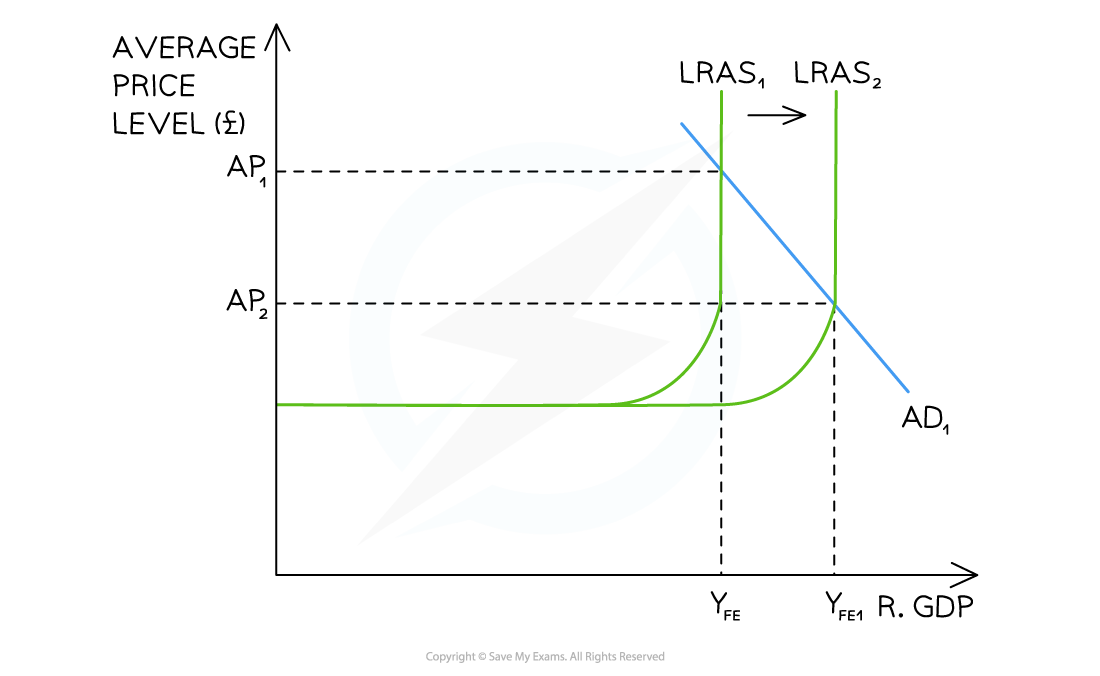- 翰林提供学术活动、国际课程、科研项目一站式留学背景提升服务!
- 400 888 0080
Edexcel A Level Economics A:复习笔记2.6.3 Supply-side Policies
Supply-side Policies
- Supply-side policies aim to shift the long-run aggregate supply (LRAS)
- There are two categories of supply-side policies
- Interventionist and market-based
- Interventionist supply-side policies require government intervention in order to increase the full employment level of output
- These are mainly used to correct market failure
- Market-based supply-side policies aim to remove obstructions in the free market that are holding back improvements to the long-run potential
- E.g. Setting up a regulator to prevent monopolies forming
Aims of Supply-side Policies
- Broadly speaking, there are five aims of supply-side policies
- The overall aim is to increase the quantity/quality of the factors of production
Market Based & Interventionist Strategies to Meet the Aims of Supply-side Policies
| Aim of Supply-side Policy | Market Based Approach | Interventionist Approach |
| To increase incentives |
|
|
| To promote competition |
|
|
| To reform the labour market |
|
|
| To improve the skills and quality of the labour force |
|
|
| To improve infrastructure |
|
Exam Tip
MCQ will test your ability to differentiate between market-based and interventionist supply-side policies.
When evaluating supply-side polices in essay responses, demonstrate critical thinking by acknowledging that privatisation has been used for so long that there is little left to privatise and perhaps a better way forward is to improve competition policy & regulation.
Remember, the private sector will also be increasing supply in an economy (it is not only up to the government) as they are incentivised to increase their profits.
Diagrams to Illustrate Supply-side Policies
- Successful supply-side policies will increase the long-run aggregate supply (LRAS)
- This equates to an increase in the production possibilities of an economy
- The successful implementation can be illustrated on either a Classical or Keynesian diagram

A Classical diagram that illustrates the implementation of successful supply-side policy

A Keynesian diagram that illustrates the implementation of successful supply-side policy
Diagram Analysis
- E.g. Efforts to reduce trade union power have been successful
- There is now less protection on wage levels
- Wage levels fall
- There is now less protection on wage levels
- Firms will now hire more workers & the quantity of productive labour in the economy has increased
- This causes LRAS1 to increase to LRAS2
- Output increases from YFE to YFE1
- Average price levels fall from AP1→AP2
- This causes LRAS1 to increase to LRAS2
Strengths & Weaknesses of Supply-side Policies
Strengths of Supply-side Policies
- They increase the rate of growth of an economy
- They reduce average price levels
- They reduce unemployment
- They often increase the value of net exports
- Improvements in Infrastructure can raise the quality of life for all citizens
Weaknesses of Supply-side Policy
- The distribution of income worsens as labour market reforms and wage policies lower worker's wages
- They are expensive to implement
- There are significant time lags between expenditure & seeing the benefits
- Due to the long-term nature, changes in government often result in changes to budgets & scope of projects
- The end result may be less effective than it could have been
- Vested interests can result in less effective outcomes e.g. There are many examples of privatisation occurring in such a way that the government's preferred bidders obtained an asset at a knock down price
- Often the preferred bidders were not necessarily the most efficient firms
转载自savemyexams
站内搜索
竞赛真题免费下载(点击下载)
在线登记
最新发布
© 2024. All Rights Reserved. 沪ICP备2023009024号-1





